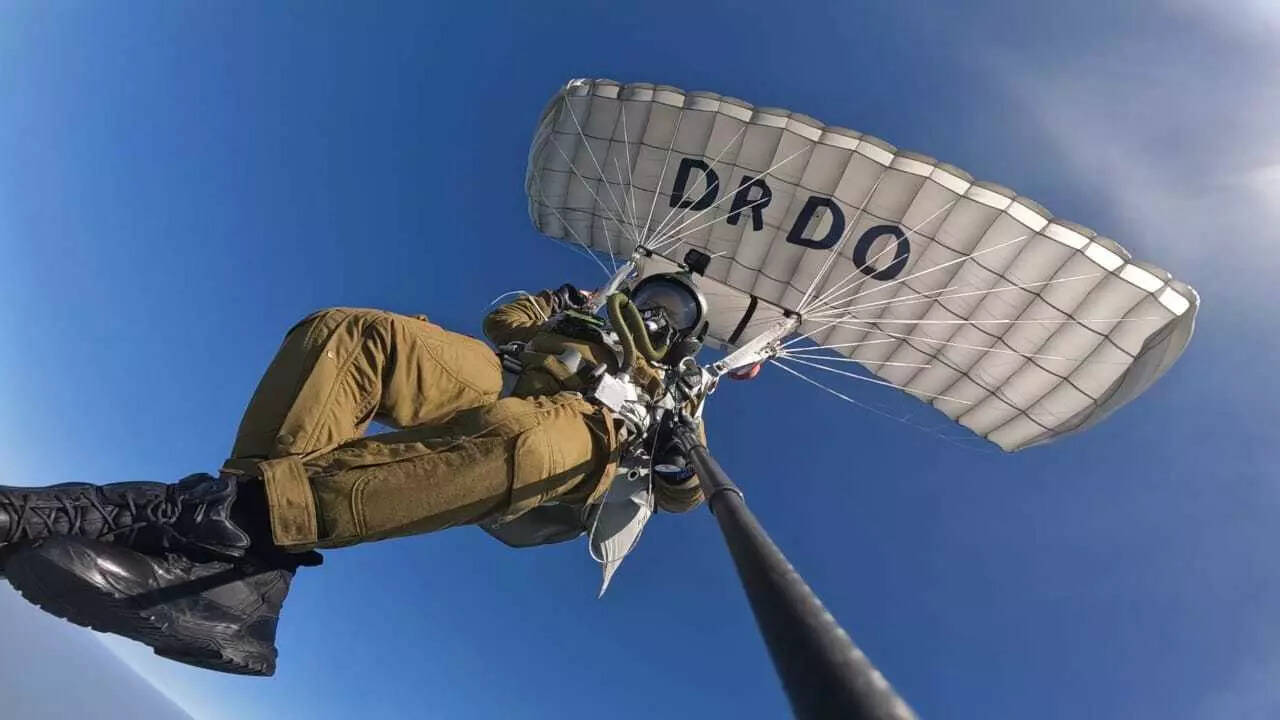
India’s long-standing quest for technological self-reliance in defence took another decisive leap when the Defence Research and Development Organisation (DRDO) successfully demonstrated the Military Combat Parachute System (MCPS) at a staggering altitude of 32,000 feet.
The high-altitude freefall test, executed by test jumpers from the Indian Air Force, has positioned India among a select group of nations capable of designing, developing, and operationalising such advanced aerial delivery systems.
A Breakthrough in Indigenous Airborne Capability
Developed by DRDO’s Aerial Delivery Research and Development Establishment (ADRDE), Agra, in collaboration with the Defence Bioengineering and Electromedical Laboratory (DEBEL), Bengaluru, the MCPS is a fully indigenous innovation. The system is now the only parachute in operational use by the Indian Armed Forces capable of deployment above 25,000 feet, a capability that significantly enhances India’s high-altitude warfare preparedness.
Unlike conventional parachutes, the MCPS incorporates advanced tactical features such as a lower rate of descent and enhanced steering precision, allowing combat paratroopers to exit at extreme altitudes, navigate with accuracy, and land in designated drop zones even under adverse conditions. The system is also compatible with Navigation with Indian Constellation (NavIC), ensuring operational autonomy and immunity from external interference or signal denial.
Strategic Implications for Self-Reliance
Beyond its technical superiority, the indigenous MCPS has deep strategic value. The system reduces dependence on imported parachute technologies, which often face logistical constraints during crises. Its shorter maintenance turnaround and longer operational lifespan make it ideal for sustained deployment in combat and training operations.
DRDO officials emphasise that the successful demonstration opens the door for mass induction of homegrown parachute systems, advancing the “Make in India” initiative in the domain of aerial delivery and combat logistics.
Leadership Endorsements
Congratulating the DRDO, Armed Forces, and industry partners on the achievement, Raksha Mantri Rajnath Singh hailed the MCPS test as “a significant milestone for India’s indigenous defence capability.”
Dr. Samir V. Kamat, Secretary, Department of Defence R&D and Chairman, DRDO, lauded the team’s achievement, describing it as “a major step towards self-reliance in aerial delivery systems.” He noted that such innovations underscore DRDO’s expanding competence across multiple domains—from land systems and naval platforms to aerospace and bioengineering technologies.
The Larger Vision
The successful demonstration of the MCPS reflects the convergence of design ingenuity, material science, and combat innovation within India’s defence ecosystem. It aligns with the national vision of Atmanirbharta in Defence, where indigenous R&D not only replaces foreign imports but also strengthens strategic autonomy.
With the skies now serving as the newest domain of self-reliance, DRDO’s combat parachute achievement is not merely a technological triumph—it is a symbol of India’s growing confidence in engineering its own security.
(Anoop Verma is Editor-News, ETGovernment)

